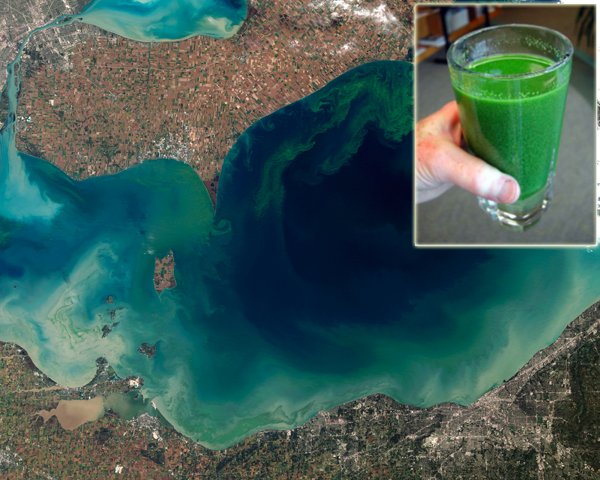A four-page New York Sea Grant (NYSG) fact sheet provides an overview on Lake Erie, the shallowest, but one of the most productive Great Lakes in the system. In addition to including information the Lake's fisheries, the publication addresses some of the problems the Lake faces, including as invasive species, dead zones, and harmful algal blooms.

Non-native species such as round gobies have had a significant impact on the ecosystem of Lake Erie.These benthic, or bottom-dwelling fish, eat the eggs and fry (young) of other fish species and displace native fishes with their aggressive behavior. Although they also readily consume zebra and quagga mussels, their feeding activities cannot control the mussels due to high reproductive rates. Unlike many other fish species in Lake Erie, round gobies can spawn several times per year, helping to increase their populations. Fortunately, larger fishes and even birds like double-crested cormorants have added round gobies to their diets, helping to control populations of this prolific invader.

One of the most pressing issues today in Lake Erie, especially in the shallow western basin, is harmful algal blooms (HABs) that have changed the once clear waters into a bright green soup.As detailed in NYSG's related fact sheet, "Lake Erie" (pdf), though, HABs are not new to Lake Erie. Ohio Sea Grant, one of NYSG's Great Lakes Sea Grant partner programs, also offers information on the topic via a four-page fact sheet, "Harmful Algal Blooms in Ohio Waters" (pdf). Includes are answers to the questions "What causes HABs to form?" and "What can I do about it?"
At a "State of Lake Erie" meeting held this past Spring, organizer Helen Domske, NYSG Coastal Education Specialist, told area anglers and residents how they can help. "One of the things they can do is stop the spread of invasive species. They shouldn't move bait buckets; they should clean their boat," said Domske. "We tell people not to flush pharmaceuticals down the drain because it does eventually get out to the lake."
Over 200 participants attended this, the 20th State of the Lake meeting, sponsored by NYSG with support from Assemblyman Sean Ryan’s office.
As mentioned in the clip below from Your News Now (YNN), the event includes presentation from the New York State Department of Environmental Conservation (NYSDEC), the U.S. Fish and Wildlife Service (USFWS) and other partners to educate local fisherman on the current status of the lake.
In addition to Domske, other speakers included Buffalo State College's Dr. Christopher Pennuto. Discussions ranged from rehabilitation efforts by conservation agencies to threats to local wildlife.
The YNN channel, based in Syracuse, telecasts two separate program feeds, one to Central/Northern New York; one to the Southern Tier. YNN is available to nearly 600,000 cable subscribers across a 25-county, 15,000 square mile area.
— Paul C. Focazio and Helen Domske